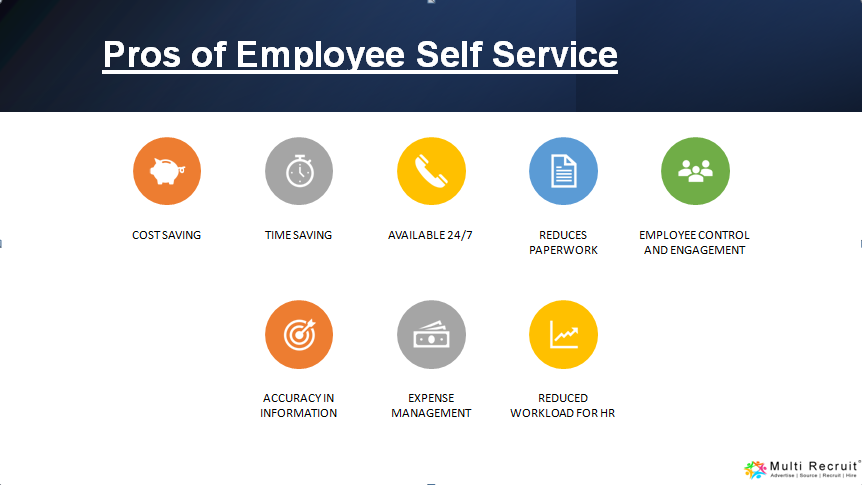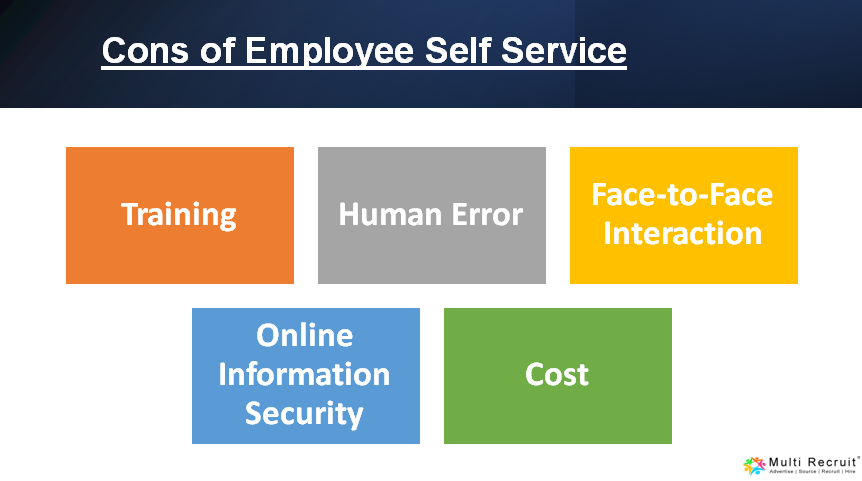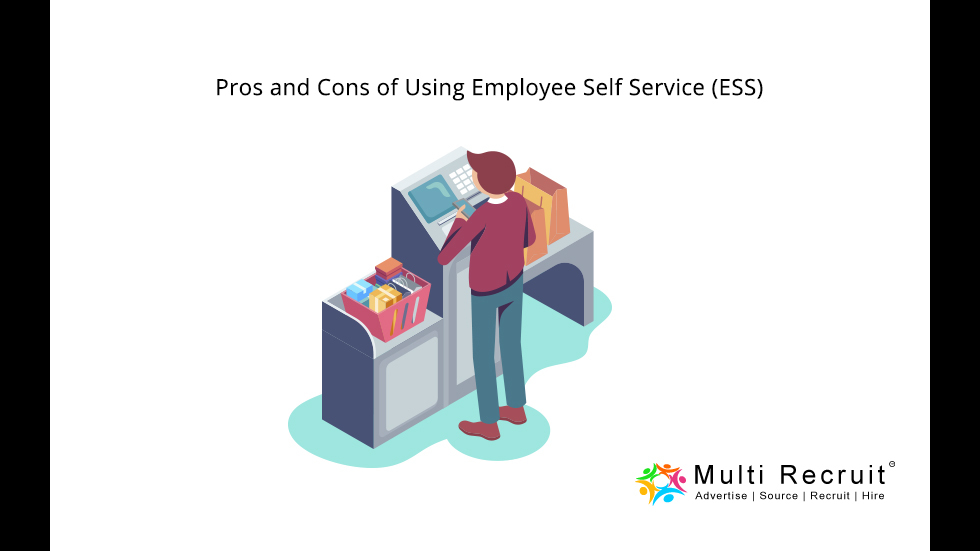Before we get to know the pros and cons of using ESS, let us get to know what is ESS & how does it benefit the Employer/ Employee
What is Employee self-service (ESS)?
Employee self-service (ESS) is a widely used human resources technology that enables employees to perform any job-related tasks such as updating personal information, and accessing company benefits information — which was once largely paper-based, managing their Leaves, keeping track of the leave eligibility and balances, & managing their pay in various aspects like submitting the Income Tax declarations, Availability of payslips and Tax Sheet, etc. The ability for employees to manage their leave; view and edit their data is one of the most important advancements of HR in recent years.
Why employee self-service how does it benefit the Employer and Employee?
In this increasingly competitive employee talent market, Employee Self-Service technology helps to create a positive work culture and to retain talent by giving workers direct control over their employment information. ESS supports the employer as well as employees in different ways.
ESS Helps the employees to:
- View the Payslips and Tax sheets.
- View the Income Tax calculation, and plan the investments needed.
- Manage time away from the office by viewing their leave balance and applying for leave online
- Easy access to Documents like Offer letter, Contract agreement, etc.
- Access and viewing their work shift and time data instead of contacting HR
- Submit timesheets electronically instead of filling out paper forms and submitting them to HR
ESS Helps the employers to:
- Reduce cost and time on HR administrative jobs by setting up auto-pay rules/leave rules
- Cut cost on printing as paper no longer needed for various process
- Keep track of staff absenteeism and status
- Allowing managers to approve/reject leave request online with a response to the employee
- Receive employee request through web dashboard & email
- Allowing managers to approve timesheets online with a note/response
- Determine access rights so the right people see the right information
- Receive reports through email
- Get details about the Investment declarations/proofs, which were once large paper-based Tasks.
Pros of ESS

- Cost Saving
According to the Centre of Effective Organizations at USC, about 50% of a human resource department’s time is spent processing employee information and answering employee questions. An ESS drastically reduces time spent on administrative duties by organizing all employees, benefits, payroll, attendance, training, and hiring information into one centralized hub.
- Time Saving
Routine HR Admin/Generalist works wastes time and energy from management that could be spent on other things. With an ESS system in place, those with HR duties will have more time to focus on things like strategic HR activities, hiring, and training. This creates a situation where Employees no longer wait for someone to research and provide them with the copies of details they needed. ESS allows companies to distribute key information about compensation, policies, and benefits quickly to the entire workforce.
- Available 24/7
The main benefit of ESS software is the Availability 24/7. Employees can access their data at any time from their desktop, laptop, tablet, or smartphone. The employees no need to wait for the next day to go to their HR department to view/knew details about their pay checks or their leaves data.
- Reduces Paperwork
ESS software helps the employee/employer to reduce the paper works or there is no need of having paper forms anymore. Employees can use their portal and complete all forms that are required, and even sign them electronically.
- Employee Control and Engagement
The position where the employees get an option the access to view and update their official data, as mentioned above it does saves time and money, moreover, it also reminds the employee of more accurate and transparent, and timely information.
- Accuracy in information
When the employee details were handled through an intermediary as before, there is a chance of losing key information in translation. ESS helps eliminates such duplicate data entry and increase record-keeping accuracy by allowing employees to check and change their data.
- Expense Management
When the employees could file expense reports, Employee Self-Service streamlines the process by providing 24/7 access to the approval and reimbursement process, including uploading receipts and managing expenses while traveling.
- Reduced Workload for HR
Empowering the employees with the ESS, the HR team no longer must worry about responding to employee enquires, such as payroll-related, Leave & Attendance related, time-off requests, and personal information updates.
Cons of ESS

- Training
The organization must use time and resources to train employees to use the new human resource system. Some employees may be uncomfortable using the computer-based system to update their records in the human resource system. Training must not only cover how to use the system but also how to troubleshoot problems and fill out certain forms, such as benefit enrolment packages. In an organization with many employees, training may require multiple sessions to ensure all employees know how to use the system.
- Human Error
A self-service system opens the possibility of errors introduced to personnel files by employees. While errors are also a possibility when human resource employees enter personnel data into files, the problem may be greater with employees who are unfamiliar with the system. The errors may go undetected without human resource oversight.
- Face-to-Face Interaction
An Employee Self Service portal reduces the face-to-face interaction between workers and personnel employees. Some employees may require assistance to understand insurance and benefit forms, which is not available with a self-service system.
- Online Information Security
Companies that use a self-service system that provides access to employees over the Internet must take steps to keep the worker’s personal information private. A system that uses the company intranet is a safer option for employee information, but it still must be guarded to protect the privacy of employee information.
- Cost
Implementing an ESS system requires a big upfront investment. The cost depends on the company’s needs, the type of service, and the service provider. Predesigned self-service packages must be amended and tweaked to accommodate a specific business. A larger business may be able to handle the upfront cost, considering the potential for savings later, but a smaller business may find the initial investment difficult.
If you are looking to reduce your workload & streamline your HR processes so that you can focus on other tasks, then get in touch with us. With Multi Recruit ESS employees can access their information at any time, check their schedules, update their records, and they can even access historical reports.

